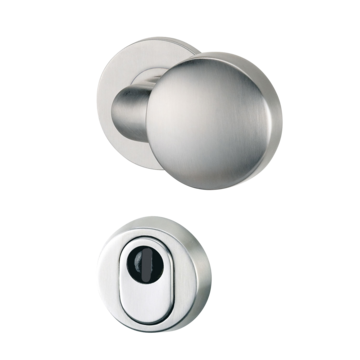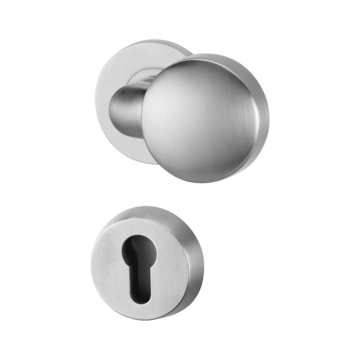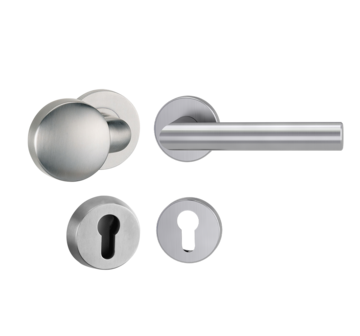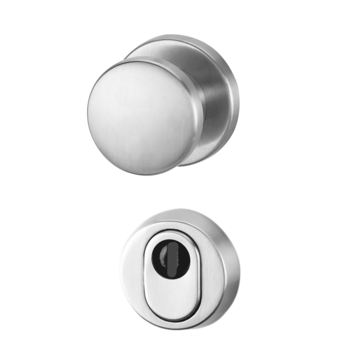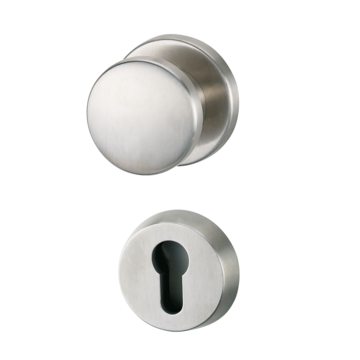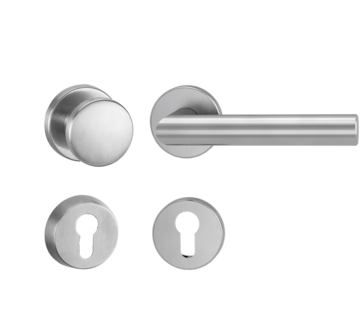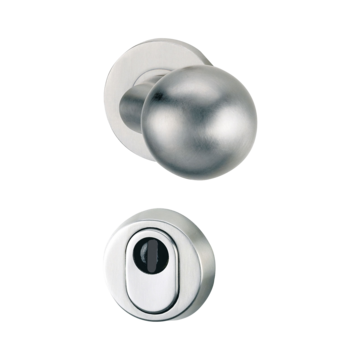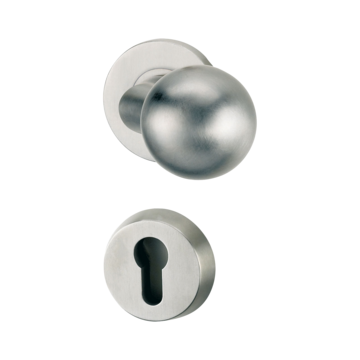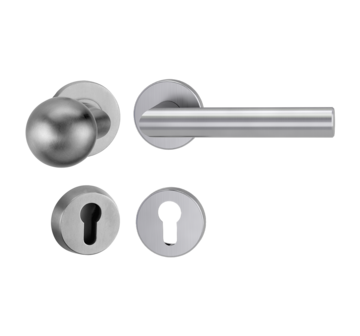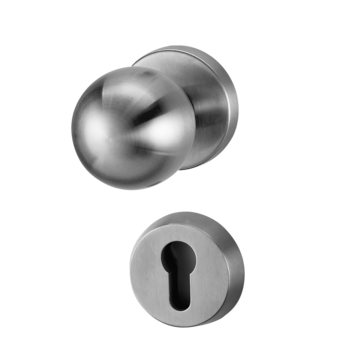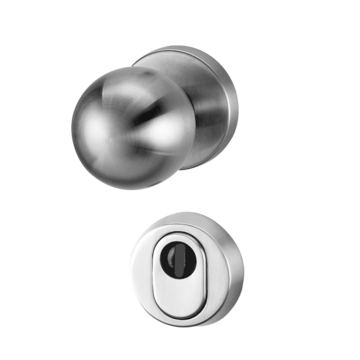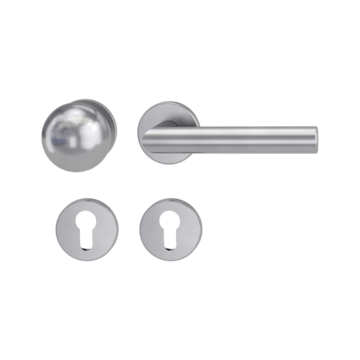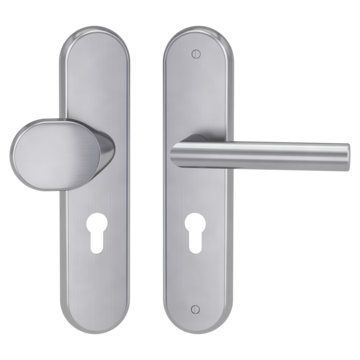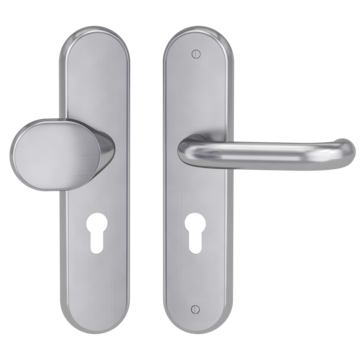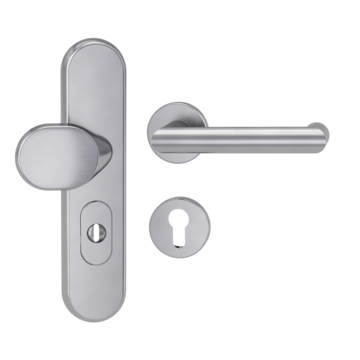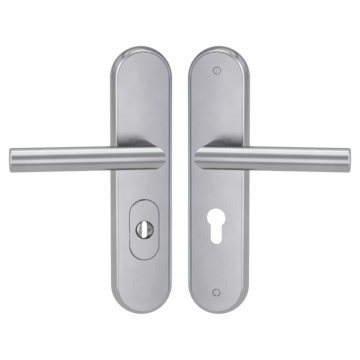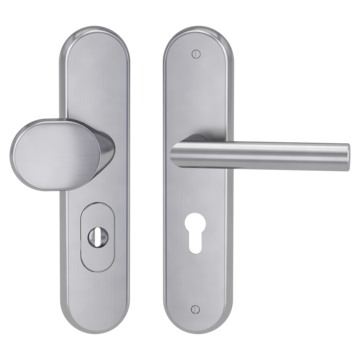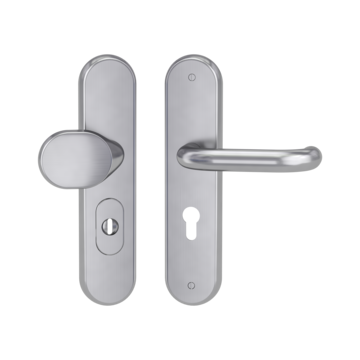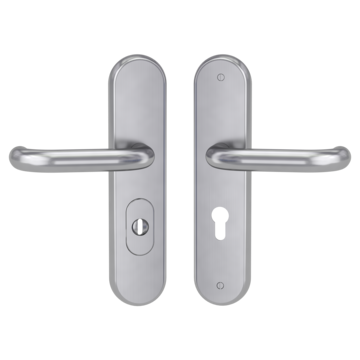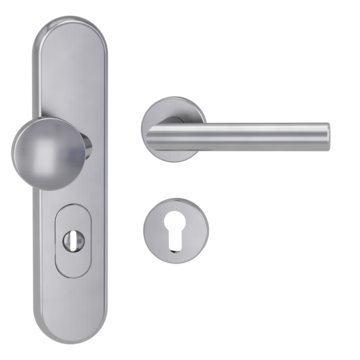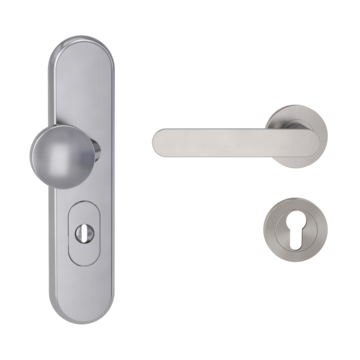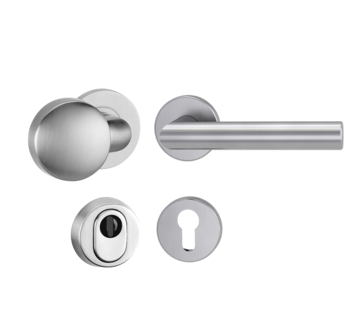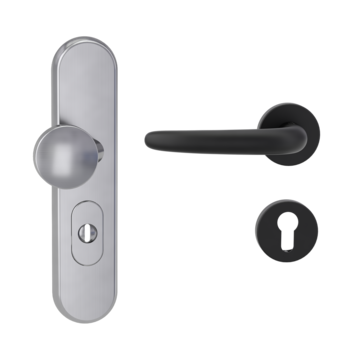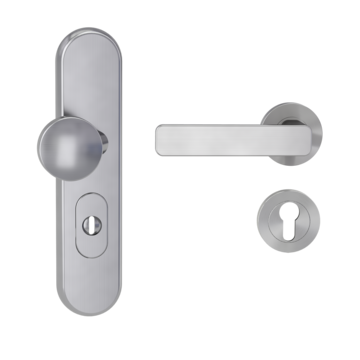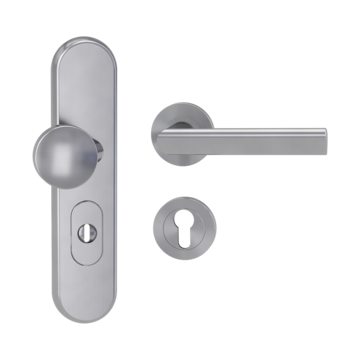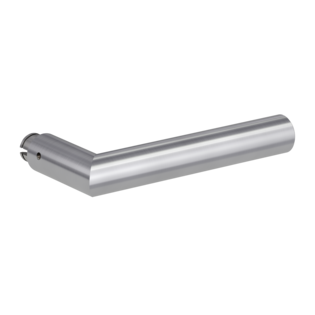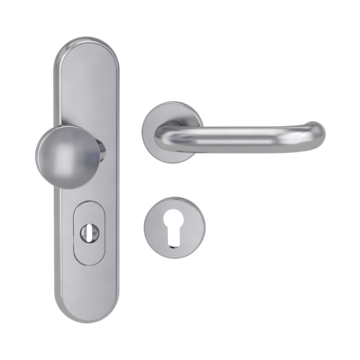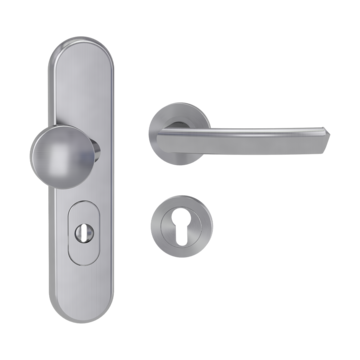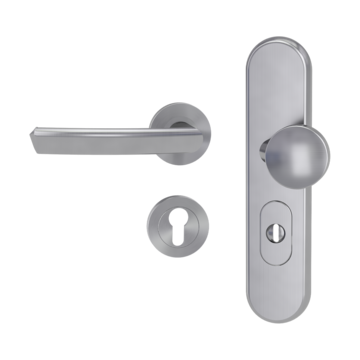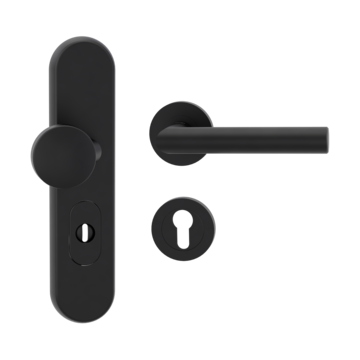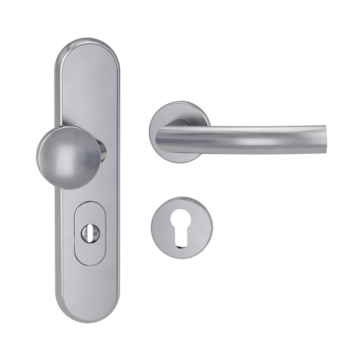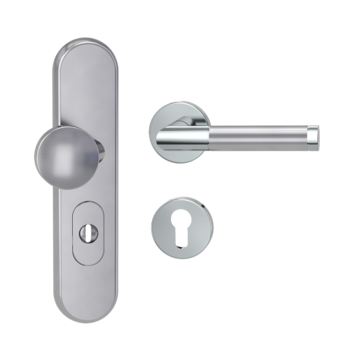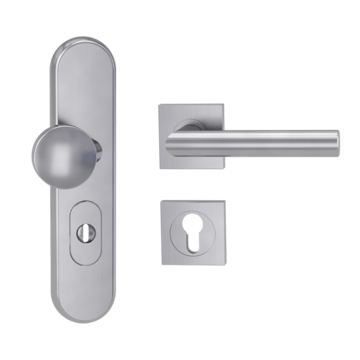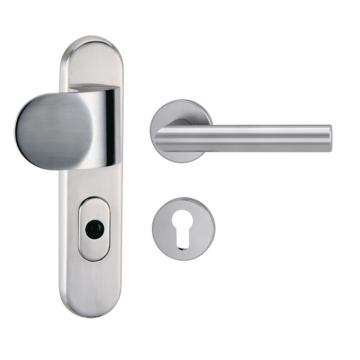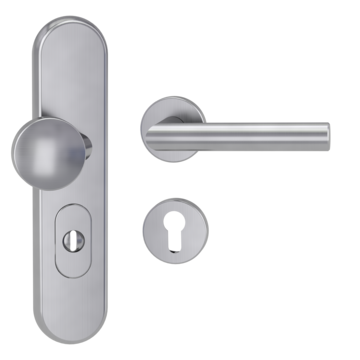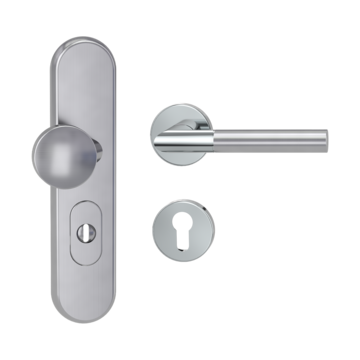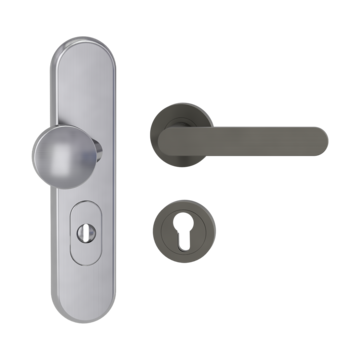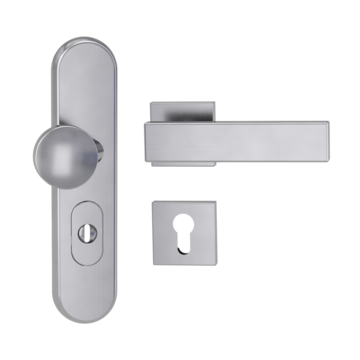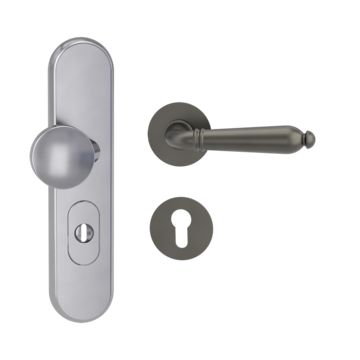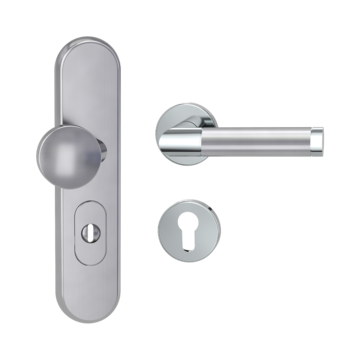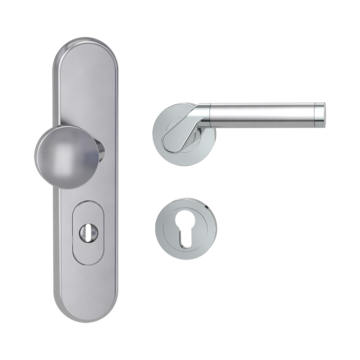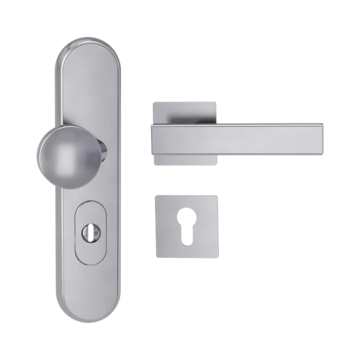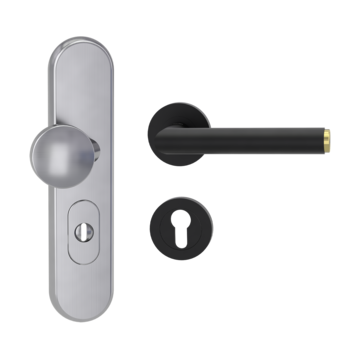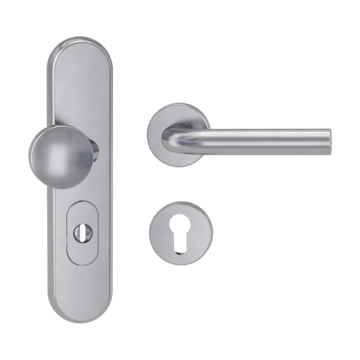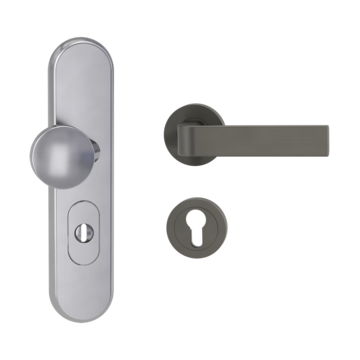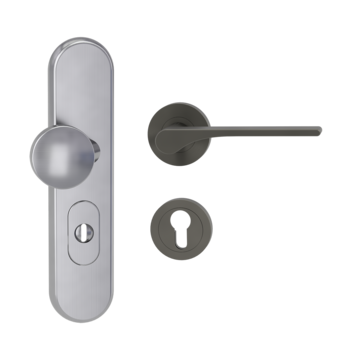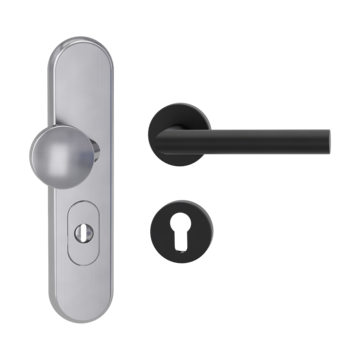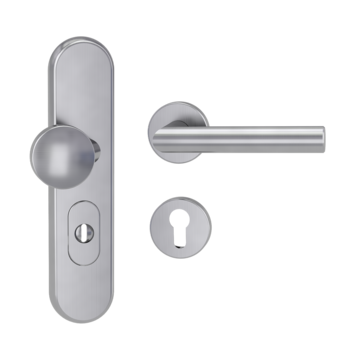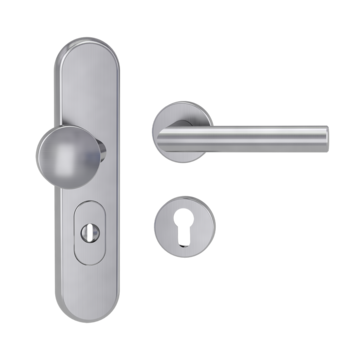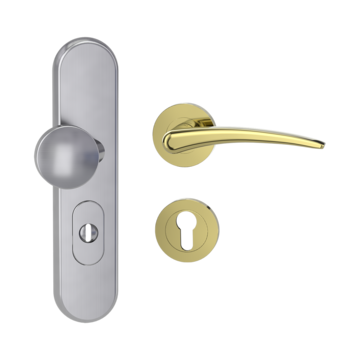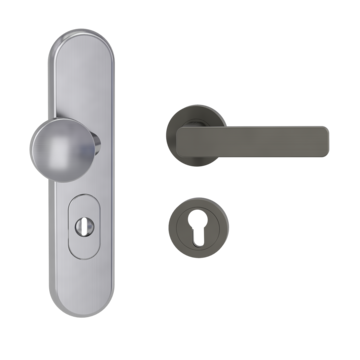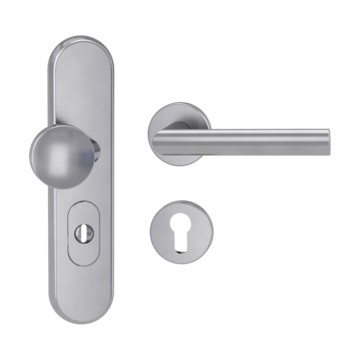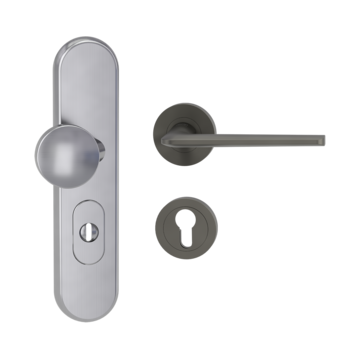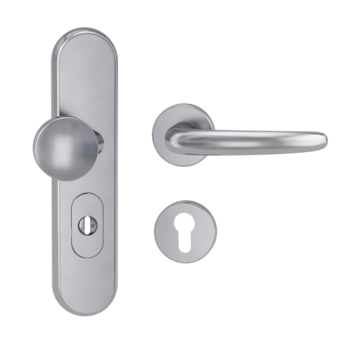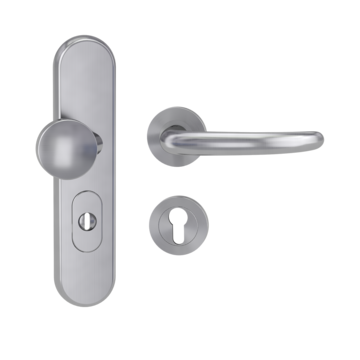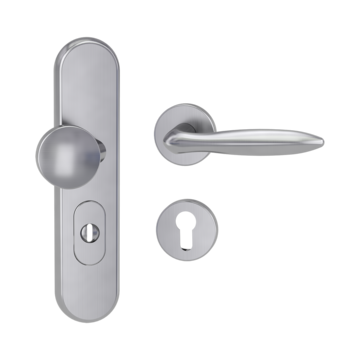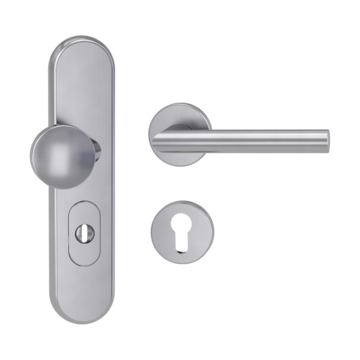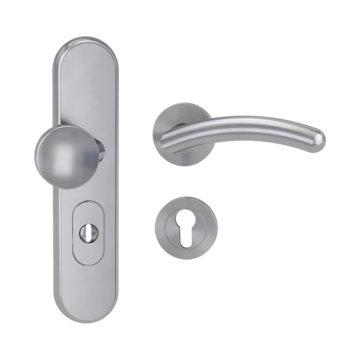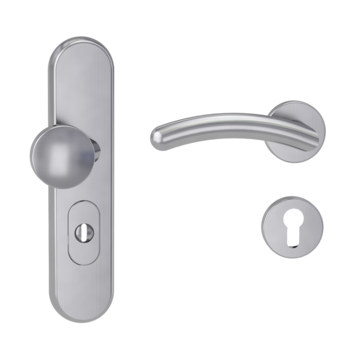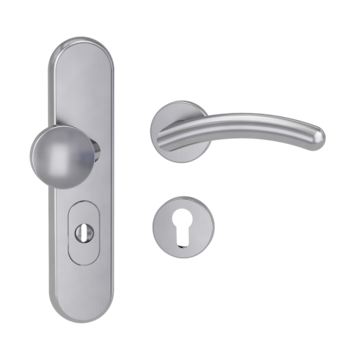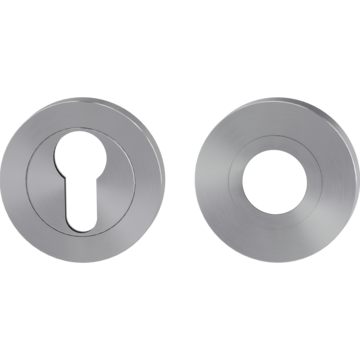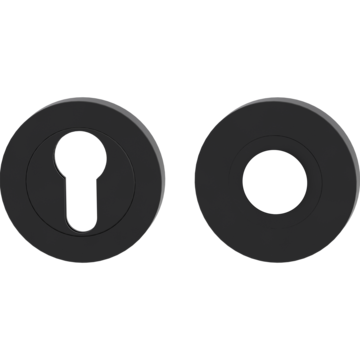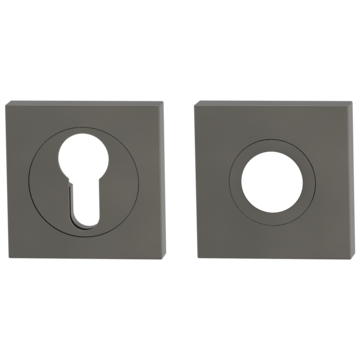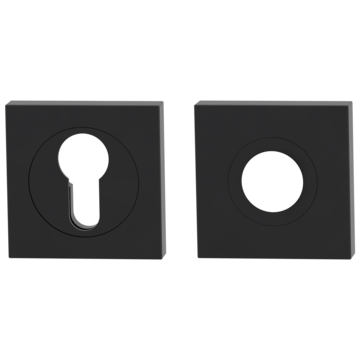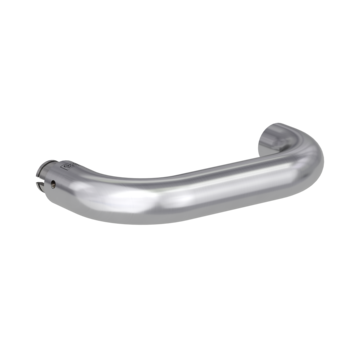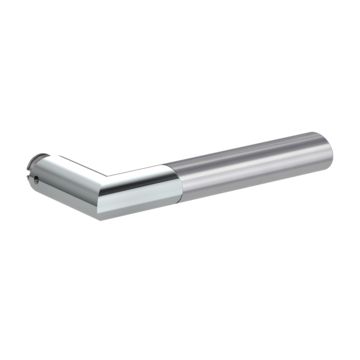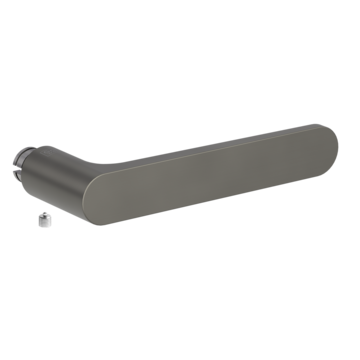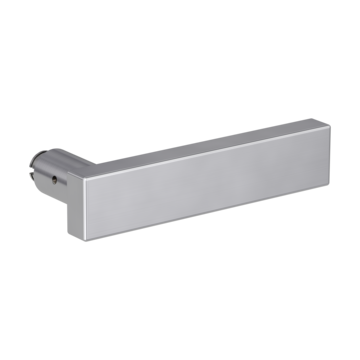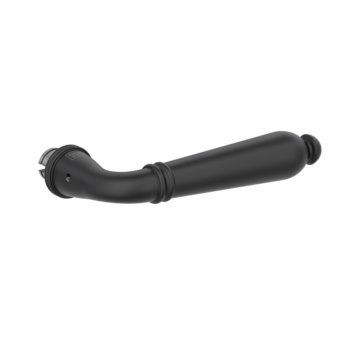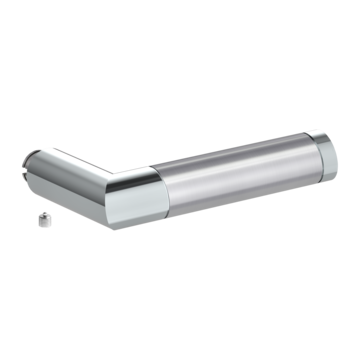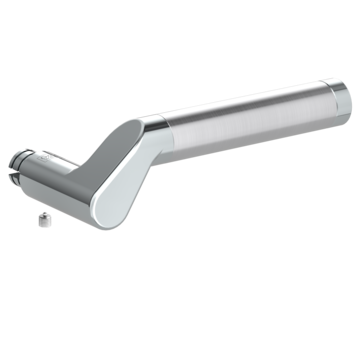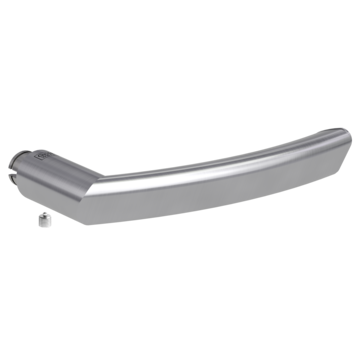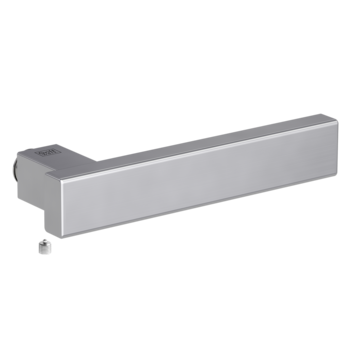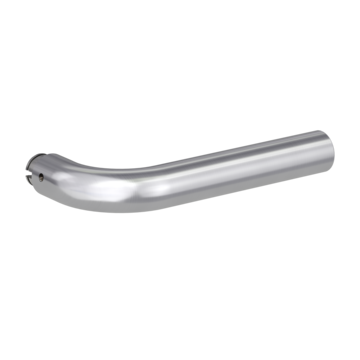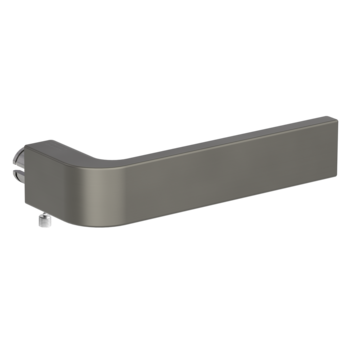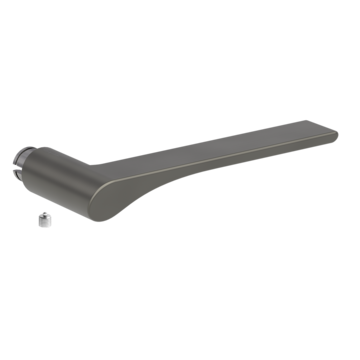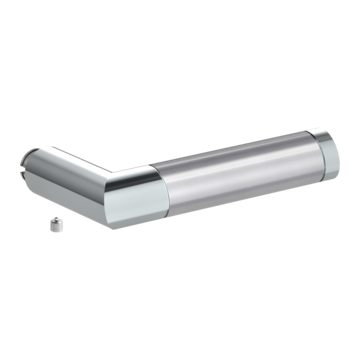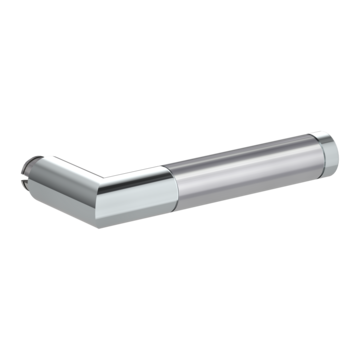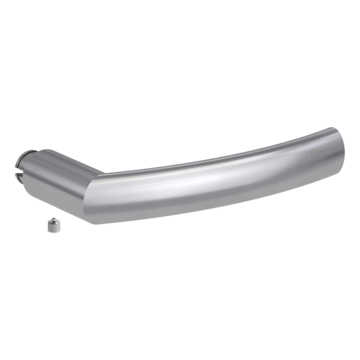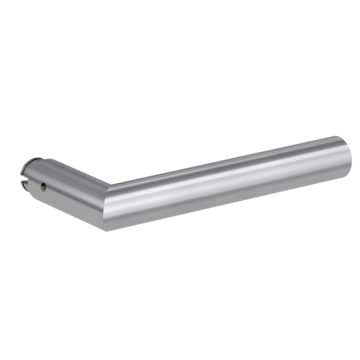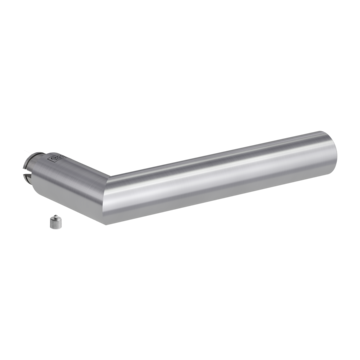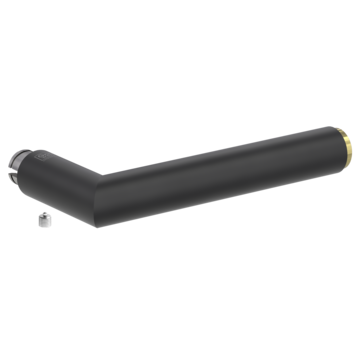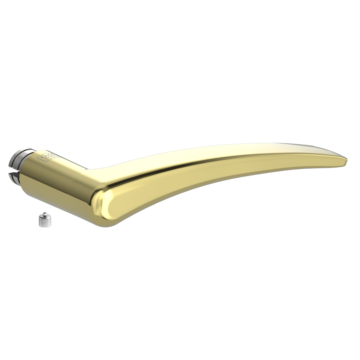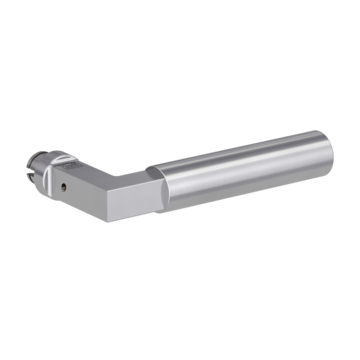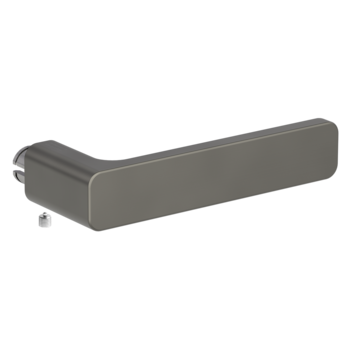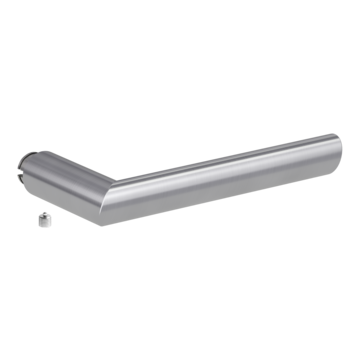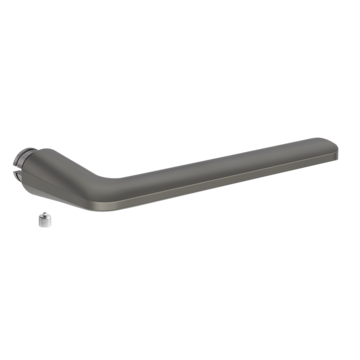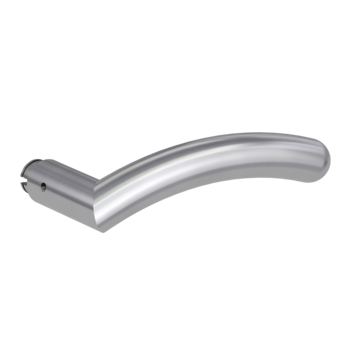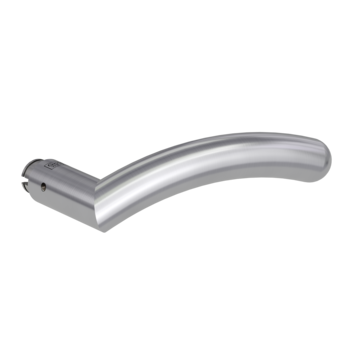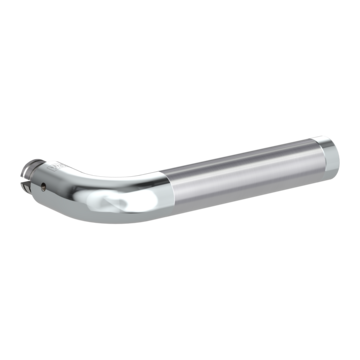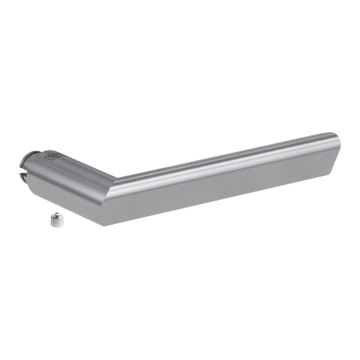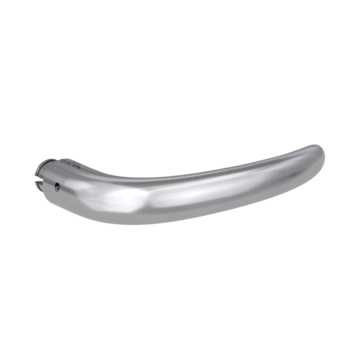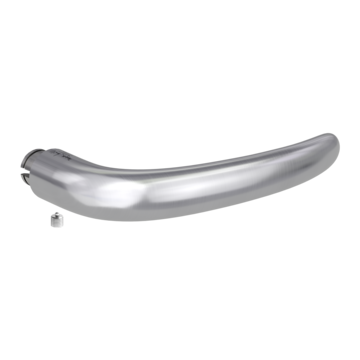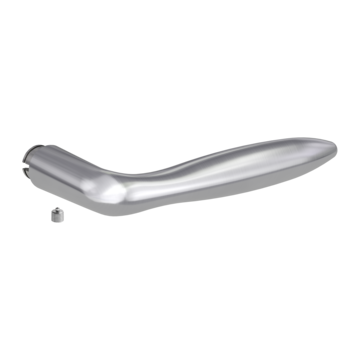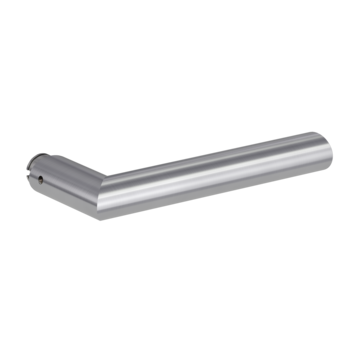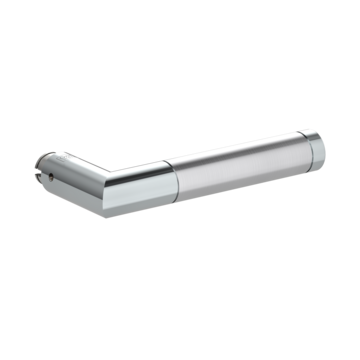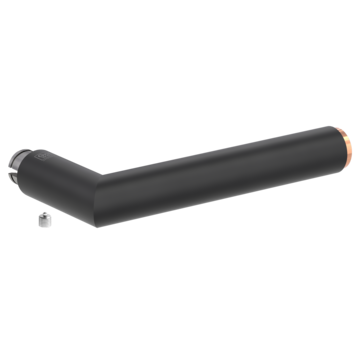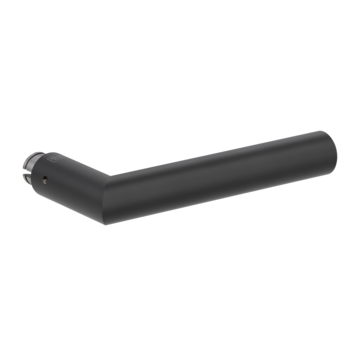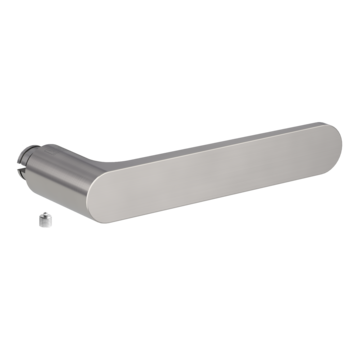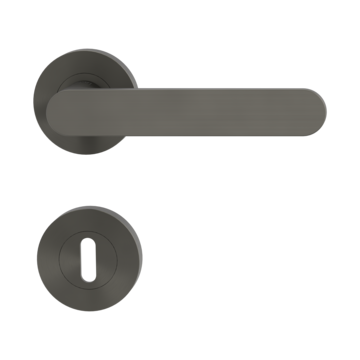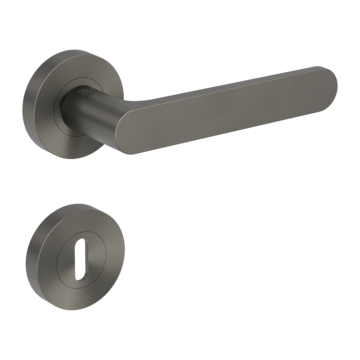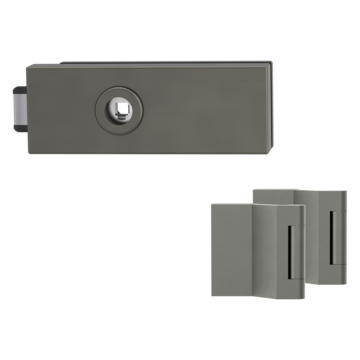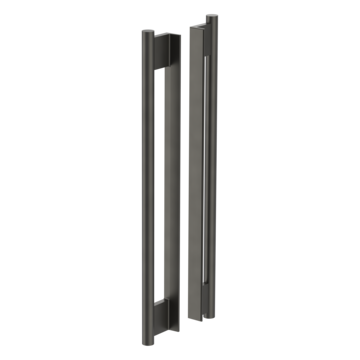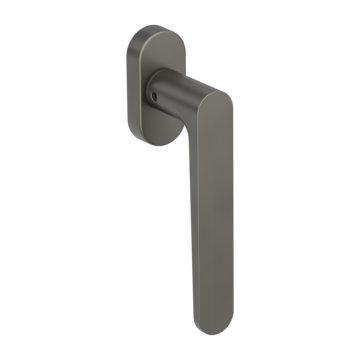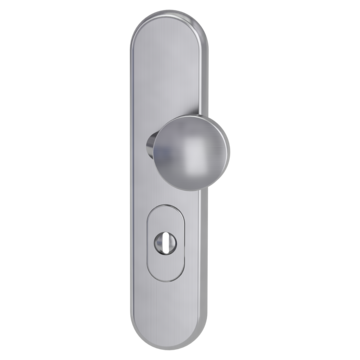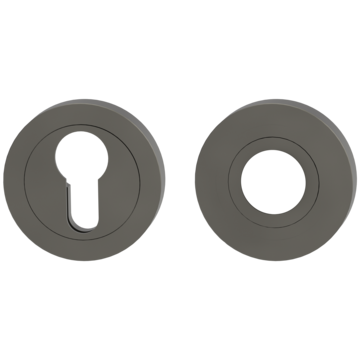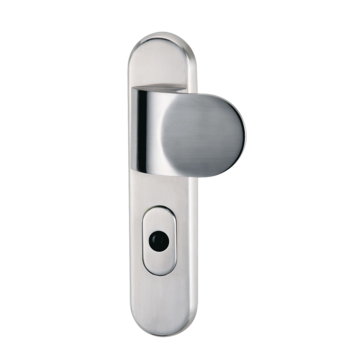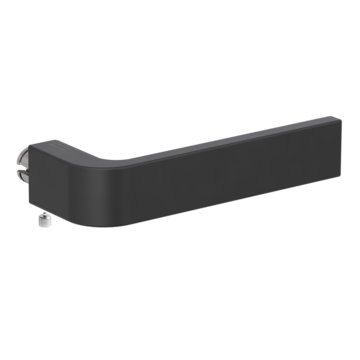Security fittings for more safety
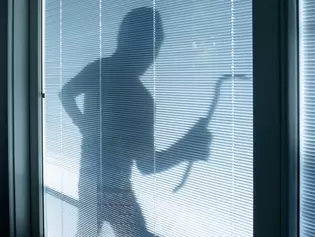
Secure the front door with protective fittings!
Every four minutes there is a burglary in Germany. The biggest weak point in flats: the flat entrance door.
Although around 75% of all burglaries target apartment buildings, too little attention has so far been paid to securing the flat entrance door with front door fittings. Burglars are under great time pressure. Attempts to resist for as little as five minutes fail. Moreover, 80 percent of the perpetrators are only occasional thieves. They do not take a high risk of detection and choose properties with unsecured weak points. Contrary to popular belief, 80 percent of burglaries take place during the day when the residents are out of the house - preferably between 10 am and 1 pm. Apartment buildings are particularly affected.
Prising open the shield of a front door security fitting or pulling protruding cylinders can be effectively warded off with a security fitting from Griffwerk.
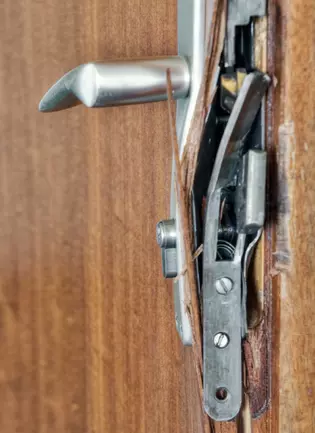
Download information leaflet security fittings (only in german)
Security fitting: Simple measures against burglars
The most effective means against unwanted intruders are so-called burglar-resistant measures. The right door protection fitting protects against mechanical impact and extends the resistance time. The burglar needs longer to enter the home or even gives up. You can find a suitable fitting online at GRIFFWERK. Flats in apartment buildings are particularly at risk - double lock your flat door when you leave. Do not leave patio or balcony doors open when you are away and always close the windows. An attentive neighbourhood that keeps an eye on your home when you are away is an advantage. In addition to the appropriate door fitting, dog signs also offer some protection against burglars, as the expected barking will alert them.
Effective burglary protection for your home!
The number of domestic burglaries continues to rise in Germany. However, most attempts could be thwarted by the right burglary protection. Too little attention is paid to the protection of front doors in particular.
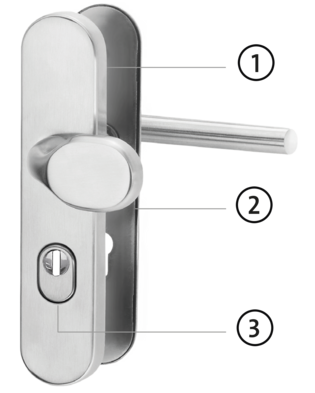
You should pay attention to this with your flat entrance door:
- Invisible screwing prevents screwing on/off from the outside.
- Special hardened steel plate offers resistance to drilling, knocking off and bending.
- 3. Hardened steel cylinder cover prevents the profile cylinder from being pulled out.
Resistance classes of protective fittings
For classification purposes, protective fittings are classified into resistance classes. They indicate how strong the burglary protection is. Depending on your individual protection needs, choose fittings from four different protection classes (ES0-ES3).
GRIFFWERK equipped the revised range of protective hardware with flanking sales support for specialist trade and crafts. GRIFFWERK has solutions at hand for sales exhibitions and mobile consulting as well.

Resistance class ES0
Components in the resistance class have basic protection against attempts to break in with physical force (mainly vandalism) such as kicking, counter-jumping, shoulder throwing, pushing up and tearing out.
✓ Suitable for secondary doors such as garage doors

Resistance class ES1
The casual burglar additionally tries to break open the locked and bolted component with simple tools such as screwdrivers, pliers and wedges.
✓ Suitable for flat entrance doors, front doors
Resistance classes ES2 and ES3
The resistance classes ES2 and ES3 are particularly robust. They are recommended for businesses and properties with a strongly increased risk, e.g. in a particularly vulnerable residential area or with high insurance values. Due to the rare demand, door fittings with these resistance classes are not in GRIFFWERK's range.
✓ Suitable for particularly dangerous residential areas, high insured values
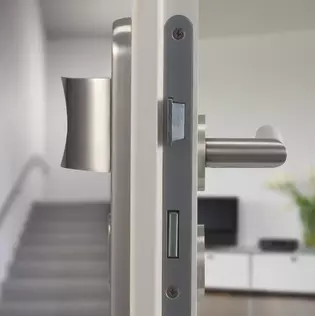
Create your own security fittings.
All doors in one look without giving up security!
Combination security fittings can be combined with rosette sets. This guarantees the protection of the flat door to the outside and to the inside you enjoy the uniform look on all doors. Choose from the extensive range of different designs for an individual result - from lever handle to rosette, from stainless steel to brass look. As a rule, you also receive the same door handle for glass lock cases and for windows.
Construction kit for security fittings
Combine the handle, inner rosette set and combination security fitting according to your design ideas. Our range leaves nothing to be desired.
Consisting of 3 parts
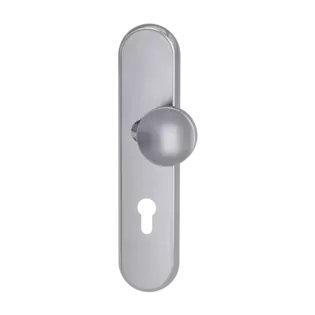
1
Combination security fitting
Available in other versions, with profile cylinder or cylinder cover.
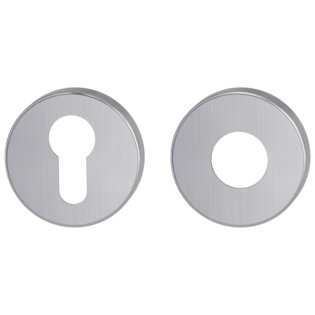
2
Combination inner rosette set
Available in further versions round, square, with and without decorative ring in all surfaces.
Combination inner rose sets always consist of a lever handle and key rose with substructure and screws for the door thickness range 38 - 50 mm.
Combination security fittings
Combination inner rose sets
Handles
One look. For the whole apartment.
If you decide on something special, you don't want to have to make any compromises. With our range you can equip your entire living room with handles in your desired colour throughout: from cashmere grey to stainless steel to brass look - from door to window.
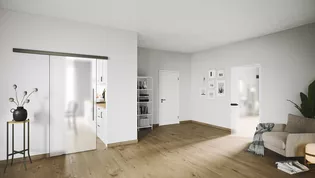

New cosiness thanks to new door handles
WARM COLOURS AND NATURAL MATERIALS
Hello Hygge! Cosiness, naturalness and tasteful restraint determine the Interiour trends. Home should be a place of security - no matter what happens out there in the world. That's why we furnish ourselves all the more comfortably. Warm tones and materials are increasingly asserting themselves against the large-scale white of recent years. Our handles with the velvety soft stainless steel look of soft2touch are a perfect match. And in three colors they complete the hip Interiour looks.
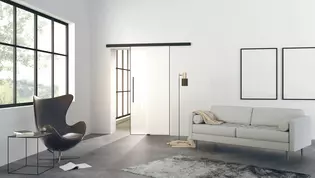
Large windows, high ceilings, authentic building materials and lots of, lots of space - that's what makes living in the loft style so attractive. What started out as an inexpensive alternative has long since advanced to the luxury class of living. After all, the stock of suitable factory buildings is limited and each building is absolutely unique. In order to bring the flair of loft living home, you don't necessarily have to renovate a factory building. Appropriate accents can be set with stylish building elements. Fittings and doors are central design elements.
Digital door viewer
The GRIFFWERK Doorcam is the ideal supplement to your safety fitting. Very easy to install in standard peephole bores, the doorcam offers a perfect view of what is outside the door. The Doorcam prevents the person outside from noticing that the peephole is being used. Supplied with power by common batteries. The field of vision is approx. 160°.
Your advantages
- Image quality: Sensor 2.0 Megapixel, 4.0 "TFT-HD monitor
- Easy to handle
- Energy-saving: The digital door viewer switches off automatically after 15 seconds
- Easy to install through plug and play
- Privacy: Prevents from noticing that the spy is being used
- Special features: Recording function with internal memory and 160° viewing angle
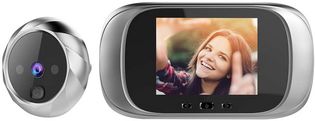
Security fittings: FAQ
What is a security fitting?
A security fitting is mounted on the front door and protects the profile cylinder and mortise lock from mechanical impact. This means that the lock cannot be broken open without considerable force - which deters burglars because it costs them time. The goal: to protect your house or flat from unwanted intruders.
What does a typical burglar look like?
Statistically, burglars tend to be young, between 20 and 30 years old, and male. There is also something to be said about nationality: according to the 2016 report of the German Insurance Association, over half of the suspects are of German origin, so typical clichés are not fulfilled. Anyone who expects black clothing that is ready for film is also wrong. Criminals try to look as inconspicuous as possible. Light, colourful clothing with conspicuous features is avoided and dark clothing gives more camouflage at night, but typical clothing cannot be described per se. The more normal the criminal appears, the more successful he can be in carrying out his plan. Large pockets are also not an indication: a screwdriver is simply hidden, and jewellery, credit cards and money fit into a jacket pocket. More meaningful is the behaviour and to what extent the presence of a person deviates from the usual and cannot be explained. Also interesting: According to the above report, surprisingly more than 40% of the burglars come from the direct environment of the victims.
Which houses and flats are most frequently broken into?
Single-family homes account for a smaller share of almost 30%. By contrast, flats in multi-family houses (67%) are particularly at risk, especially those on the ground floor. Here it is particularly important to equip windows and doors with burglar-resistant features. Why multi-family houses are preferred can only be guessed at: The more flats there are, the more anonymous is the relationship between the tenants and so it is easier to act as a thief. This is why communication-intensive two-family houses bring up the rear with 5.8 percent. Long-time thieves would quickly attract attention here. By the way, statistically speaking, the upper floors in apartment buildings are particularly popular targets for burglaries. Criminals can disguise themselves as representatives or service providers and thus gain access to the stairwell. On the upper floors, hardly any neighbours pass by. They can go about their business undisturbed.
Woran erkenne ich gute Schutzbeschläge?
Good security fittings are labelled with the manufacturer's name or mark, the resistance class and the test number. They are marked with the corresponding test and inspection mark.
What can you do to prevent a break-in?
It is advisable to equip windows and doors with burglar-resistant protective fittings, but rethinking daily habits also helps to prevent burglaries: even on hot summer nights, do not leave windows and patio doors open and always close all roller shutters at night. Windows should not be left unattended in the tilt position and doors should not only be closed but also locked when leaving the flat. This is advisable for insurance reasons, as a burglary is only considered to be proven if traces of forced entry are visible. If this is not the case, it can be assumed that the residents have been negligent. The insurance company does not then have to pay for the damage. Ground level patio and balcony doors are a major weak point. However, balconies that can be accessed, for example, via an adjacent garage roof, are also popular with thieves.
What kind of burglary protection is needed in old buildings?
Old windows and doors are an invitation for every burglar. Outdated doors must either be replaced as a whole assembly, i.e. including the frames, or retrofitted as best as possible. The easiest way is to at least change the front door fitting. Doors can then still be opened by force, for example by massive entry, but this causes noise and the destroyed door is clearly visible. Thieves prefer more inconspicuous methods. What applies to doors must also be observed for windows. If it is not possible to replace windows, at least burglar-resistant fittings should be chosen. Window grilles also do a good job. They must be installed professionally and are always advisable, especially for cellar windows that are difficult to see. Those who close roller shutters are also better protected. Entrances can also be illuminated or equipped with electronic security measures, for example cameras, motion detectors or alarm systems.
What do you need to pay attention to in outdoor areas?
Of course, the location of the flat and also the environment around windows and doors plays a role. All areas around the house that provide coverage are particularly sensitive. These include the backs of gardens, cellar exits (!), side doors at garages or entrances with adjacent dense vegetation, which allows thieves to retreat quickly. The more cover there is, the more undisturbed offenders can proceed. So the rule is: the more endangered the location, the more should be secured. In addition, burglars want an undisturbed escape route. Less used paths along the back of the garden are ideal from the point of view of criminals. They can already be used for spying on suitable objects. So avoid dense embankments, provide good lighting and install motion detectors where necessary. One more tip: a study has actually shown that dog warning signs deter thieves. It is less a question of fear of the bite than of the noise that the four-legged friend might make.
What is most often stolen from homes?
Cash is always sought and stolen, of course. Jewellery and watches, however, are number 1 on the hit list of the most popular stolen goods. In addition, small electronic devices such as mobile phones, tablets and cameras are also taken. A widescreen TV is tempting, but harder to transport, so it may be spared.
Which insurance issues are relevant for me from a safety perspective?
Never just pull the front door closed. Under certain circumstances, they are legally considered to be unlocked. In order to benefit from insurance cover in the event of damage, it is worth checking with your insurance company. Take this opportunity to clarify whether the resistance class of the protective fittings is sufficient.
What standards apply to burglar-proof residential doors?
The European standard DIN EN 1627 defines the resistance of burglar-proof building elements such as doors. It has been valid since September 2011 and replaces the previous pre-standard DIN V ENV 1627. To ensure effective protection against burglary, all components should be coordinated with each other. Attached is a table showing the correlation between DIN EN 1627 and DIN 18257.
What do I have to consider when renovating rented flats from a safety point of view?
A security upgrade in rented flats, like all changes affecting the building fabric, must be agreed with the owner. It makes sense to obtain written permission, which also excludes the obligation to dismantle the building when moving out. Ideally, change requests can be clarified before the tenancy agreement is signed.
Mechanical burglary protection is more than just protective fittings: What else should I look out for?
Anyone who wants to provide additional protection for their home or property can take one of the following special measures. GRIFFWERK does not sell these products, please contact an appropriate specialist dealer if you are interested.
- Multi-point lock: A multi-point lock is an alternative to the mortise lock that secures the front door with up to 7 locking elements.
- Hinge side security: With hinge side security, several toothed elements interlock in order to keep the attack surface for mechanical effects as small as possible.
- Sturdy striking plate: High-quality striking plates allow the deadbolt and latch of the mortise lock to engage when the front door is closed.
- High-quality locking cylinder: A burglar-proof locking cylinder ensures increased security through drilling and picking protection.
- Stable door hinges: Door hinges connect the door frame or frame and the door leaf - similar to a hinge. Deeply anchored door hinges protect against the door being prised open.
Why protective fittings?
Protective fittings protect doors, locking cylinders and handles against manipulation from the outside. They are composed of an inner shield with a door handle or door knob and a resistant outer shield to which a knob, handle or door lever is attached. Screwed from the inside, protective fittings have no attack surface for burglars: nothing sticks out that can be broken off or twisted or pulled out.
What is the best burglary protection?
Anyone who wants to protect themselves and their belongings from burglars is faced with a difficult choice: Which measures are sensible and how much security precaution must be taken? One thing first: Basically, when it comes to burglary protection, it is always about so-called burglary-resistant measures. They serve to extend the resistance time, i.e. the time that the material withstands until the burglar has made it into the room. This significantly increases the risk of detection and effectively deters criminals. Since thieves usually enter the living space through poorly secured windows and doors, it makes sense to equip them with protective fittings in such a way that entry is made decisively more difficult. An all-round concept from front door fittings to window protection makes sense, because every weak point is an invitation that can be used by the burglar.
What protection class is recommended for private homes?
A protection class always refers to the resistance of the material to an attempted burglary. For private dwellings with normal to increased risk, the protection provided by doors and windows of classes RC 1 - 3 is considered sufficient. RC 3 essentially corresponds to resistance class 3. From the higher classes onwards, even experienced offenders can be fended off who use heavy tools such as a percussion axe or a drill to attack the windows or doors. However, occasional offenders tend to use simple tools that can be hidden inconspicuously, such as screwdrivers, pliers or wedges.
How can you protect yourself from burglaries in your neighbourhood?
A good and attentive neighbourhood is worth a lot. So make sure you talk to your neighbours if they are planning to be away for a long time. Watch out for strange visitors in the residential area. A few days before a planned break-in, a patrol usually patrols the area. The accomplices look for suitable objects and try to find out as much as possible, for example when a resident is at home, whether a dog lives in the house, how many people live there and how the entrances are secured. Sometimes houses are even marked with so-called crook tines in the form of chalk markings. To find out whether a house is currently occupied, strips of tape are attached inconspicuously to the entrance or garden door. In this way it can be seen whether it has been opened. Sometimes a parcel note is left behind or a small detail is changed, such as moving the doormat. Pay attention to such signs and inform the police if this happens.
When is the most frequent burglary?
One would assume that burglars are most active at night and during holidays. However, this is only true for 15% of burglaries. According to studies, the high season for burglars at the end of the year is between October and December. If burglaries occur at night, they are most likely to occur in the morning hours between 2 and 4 am. At this time, residents and neighbours are thought to be fast asleep. However, a break-in in broad daylight between 10 am and 6 pm is much more likely. Studies have shown that this is true for more than half of all burglaries. By no means are only single-family homes affected: In the morning between 10 a.m. and 1 p.m., flats in apartment buildings are the focus of criminals. Another frightening fact: in about 13 % of the burglaries in one study, the residents were inside the house. Statistically speaking, a break-in is statistically most unlikely on Sundays, and more likely on Thursdays and Fridays.
